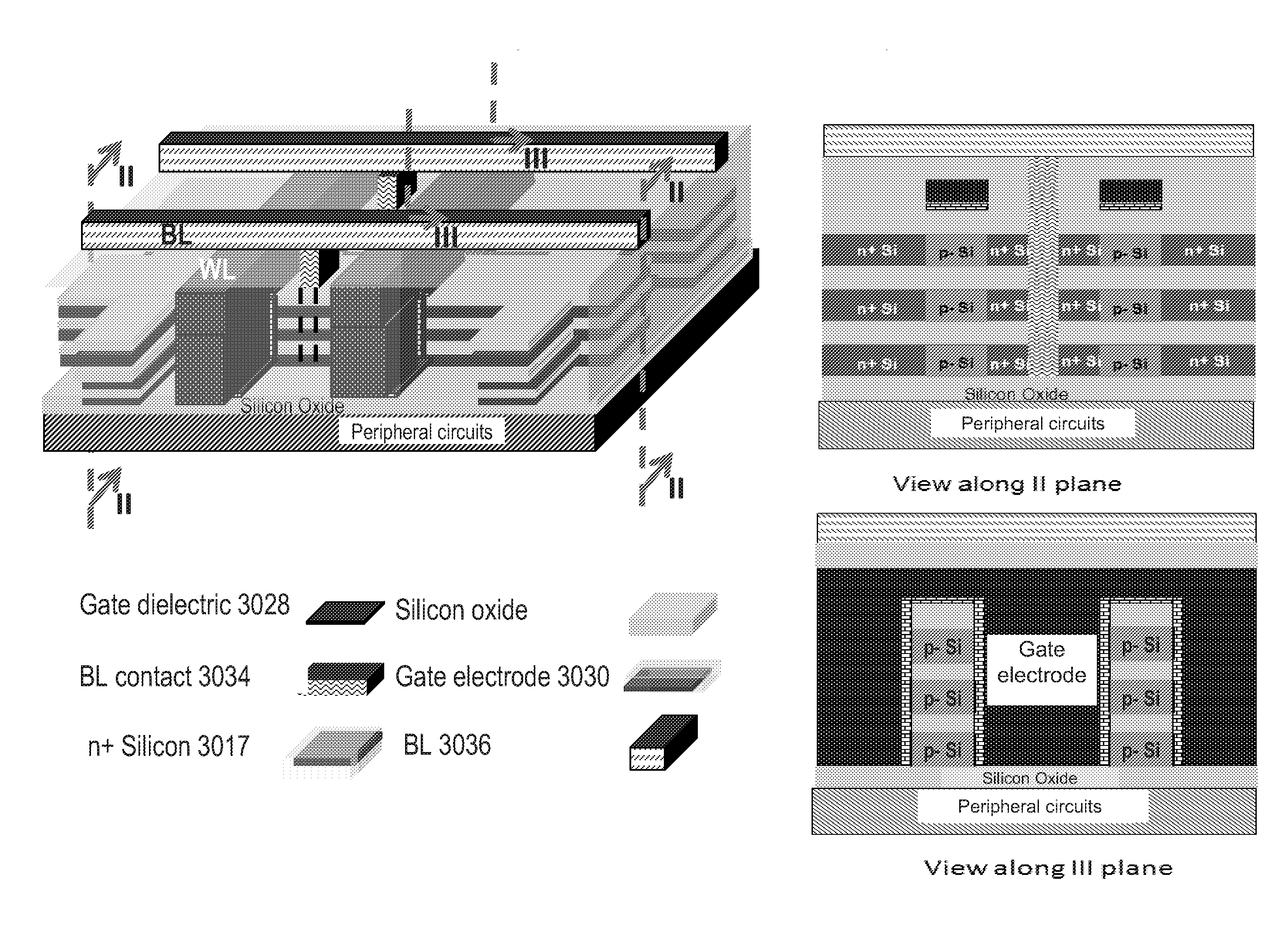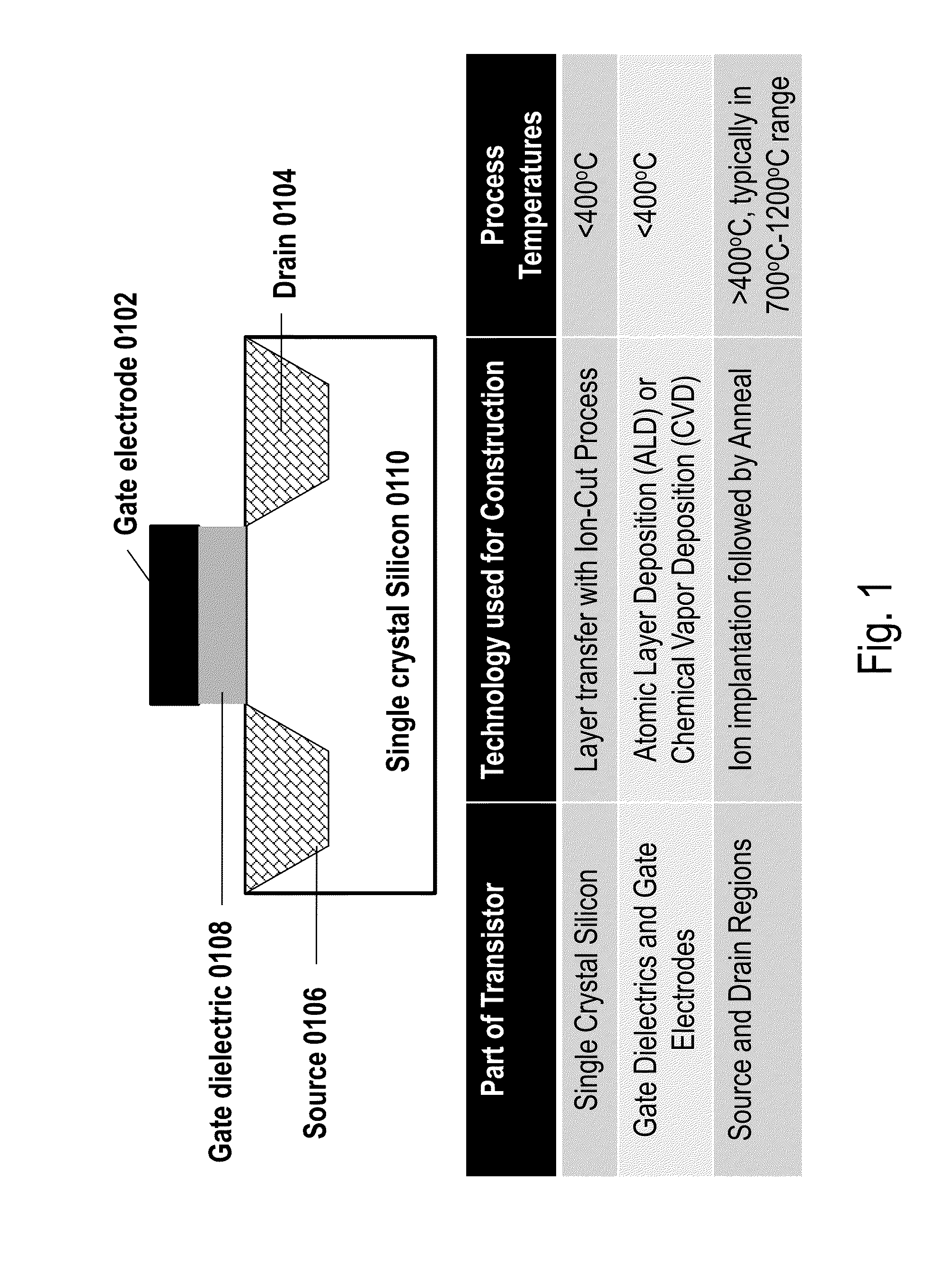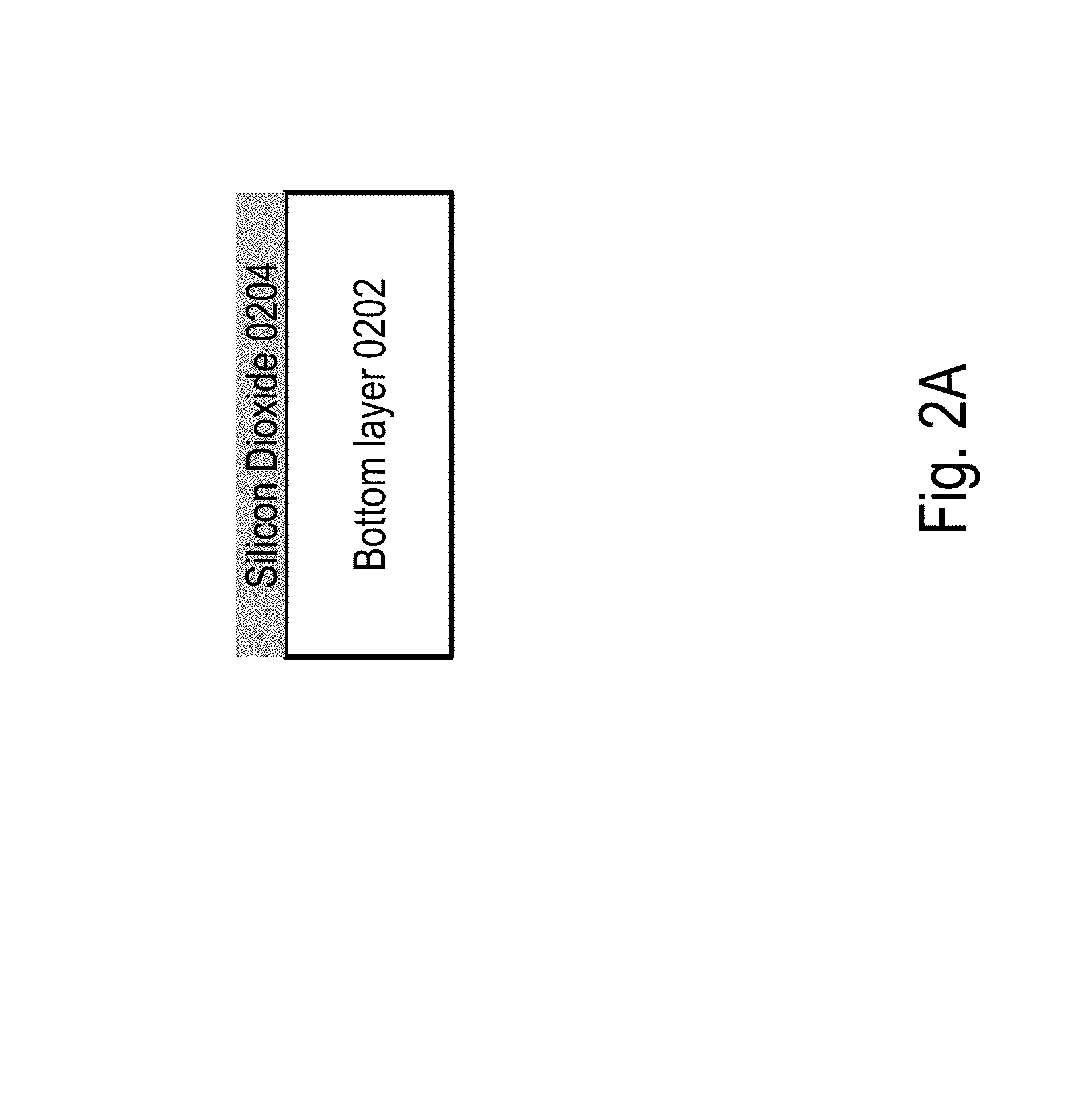3D memory semiconductor device and structure
a semiconductor and 3d memory technology, applied in semiconductor devices, semiconductor/solid-state device details, electrical apparatus, etc., can solve the problems of many barriers to practical implementation of 3d stacked chips, copper or aluminum wiring levels, and wires (interconnects) that connect together transistors degrade in performance with scaling,
- Summary
- Abstract
- Description
- Claims
- Application Information
AI Technical Summary
Benefits of technology
Problems solved by technology
Method used
Image
Examples
Embodiment Construction
[0087]Embodiments of the present invention are now described with reference to FIGS. 1-52, it being appreciated that the figures illustrate the subject matter not to scale or to measure. Many figures describe process flows for building devices. These process flows, which are essentially a sequence of steps for building a device, have many structures, numerals and labels that are common between two or more adjacent steps. In such cases, some labels, numerals and structures used for a certain step's figure may have been described in previous steps' figures.
Section 1: Construction of 3D Stacked Semiconductor Circuits and Chips with Processing Temperatures Below 400° C.
[0088]This section of the document describes a technology to construct single-crystal silicon transistors atop wiring layers with less than 400° C. processing temperatures. This allows construction of 3D stacked semiconductor chips with high density of connections between different layers, because the top-level transistor...
PUM
 Login to View More
Login to View More Abstract
Description
Claims
Application Information
 Login to View More
Login to View More - R&D
- Intellectual Property
- Life Sciences
- Materials
- Tech Scout
- Unparalleled Data Quality
- Higher Quality Content
- 60% Fewer Hallucinations
Browse by: Latest US Patents, China's latest patents, Technical Efficacy Thesaurus, Application Domain, Technology Topic, Popular Technical Reports.
© 2025 PatSnap. All rights reserved.Legal|Privacy policy|Modern Slavery Act Transparency Statement|Sitemap|About US| Contact US: help@patsnap.com



